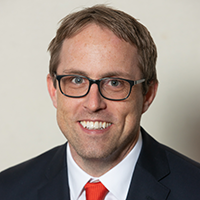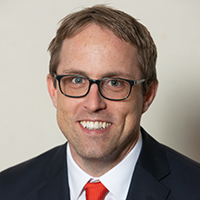
How Peoples Bancorp Prevailed Through PPP
“You only learn who has been swimming naked when the tide goes out,” wrote Warren Buffett in his 2004 annual letter.
He was referring to operations that trade derivatives. You don’t really know the value of what you hold in opaque markets, he explained, until it’s tested in hard times.
The same can be said about banking.
Rarely has the industry faced an environment as acute as today.
“The scope and speed of this downturn are without modern precedent,” said Federal Reserve Chairman Jerome Powell earlier this week. It’s “significantly worse than any recession since World War II.”
It’s hardly an exaggeration to say that bankers bear much of the burden of saving the economy from oblivion. “If doctors and nurses are first responders to those who are sick,” says Robyn Stevens, chief credit officer at Peoples Bancorp, “bankers are the first responders for businesses, communities and economies.”
Stevens would know.
Within its three-state footprint spanning Ohio, West Virginia and Kentucky, Peoples was the top-performing bank in the first round of the Paycheck Protection Program measured by dollars of PPP loans approved per assets.
“A culture is tested when times get tough,” says Ryan Kirkham, general counsel at the $4.5 billion bank based in Marietta, Ohio. “You find out whether it is real or just lip service. We passed the test.”
The success of Peoples in the first round of PPP reveals a flaw in one of the principal narratives that has emerged from the unfolding crisis – that banks with the most advanced technology were the ones best positioned to manage the onslaught of loan applications.
It’s not that Peoples Bank hasn’t invested in technology in recent years, because it has. But the secret to its success in the first round of PPP was simple elbow grease.
Personnel from the top of the bank to the bottom volunteered to enter data into the Small Business Administration portal to process customer loan applications.
“Banks had to decide whether they were going to do it automated or whether they were going to do it manually,” says CEO Chuck Sulerzyski. “Peoples tried an automated approach but then opted for manual.”
“Many of our most senior executives have done data entry until 8, 9, 10, 11, 12 at night,” he adds. “We did over 100 of these loans on Easter Sunday. And when they shut banks over $1 billion out from 6 p.m. to midnight one evening, we had a couple dozen people volunteer to work midnight to 4 a.m. putting in the entries.”
This success reflects a culmination of a decade’s worth of effort, spearheaded by Sulerzyski, who joined the bank from KeyCorp in 2011.
The 62-year-old CEO spent the previous four decades working up the corporate ladder at multiple prominent banks. He worked at Citibank during the Walter Wriston era. He was at Chemical Bank when Walter Shipley was CEO. And he spent eight years at Bank One, working closely with President Don McWhorter and CEO John B. McCoy.
Sulerzyski has been there and done that, in other words. One lesson he’s learned along the way has been the importance of culture and customer relationships. It’s a lesson that has paid off in spades over the past three months.
“From a competitive standpoint, a lot of the large banks struggled with PPP,” Sulerzyski says. “One of the large regionals couldn’t do any loans the first few days. Another one started, but then had to shut down. Each of the bigger banks we compete against had their own degree of difficulties with this. Because our customers were well taken care of, CPAs and attorneys started referring business to us and it kind of snowballed on itself.”
Sulerzyski’s team speaks in single voice on this.
“Our commitment to our communities and the importance that plays resonates with our employees,” says Thomas Frawley, senior vice president, consumer lending. “They start the call as a banker and end the call as a counselor, listening to the fears of our customers while assuring them that we are going to do our best to help them.”
“We have several associates who are working day and night,” says Ann Helmick, director of enterprise risk management. “They are doing this for the good of the client. For most, there will not be a personal gain.”
“It is easy to come up with a mission, vision and values. And when times are good, it can be easy to live by those values,” says Jason Phipps, regional president. “It is when a company or person faces adversity that you find out who a person or who an organization really is.”
One can argue all day long about the importance of scale and technology, and how it could soon be a principle competitive differentiator in banking. But technology is only a tool to help bankers ply their trade. The soul of any organization, and the true source of performance, lies instead in the people who run it.
“Bankers may have got a bad rap during the last crisis,” says Stevens, “but ours have been heroes during this one!”



